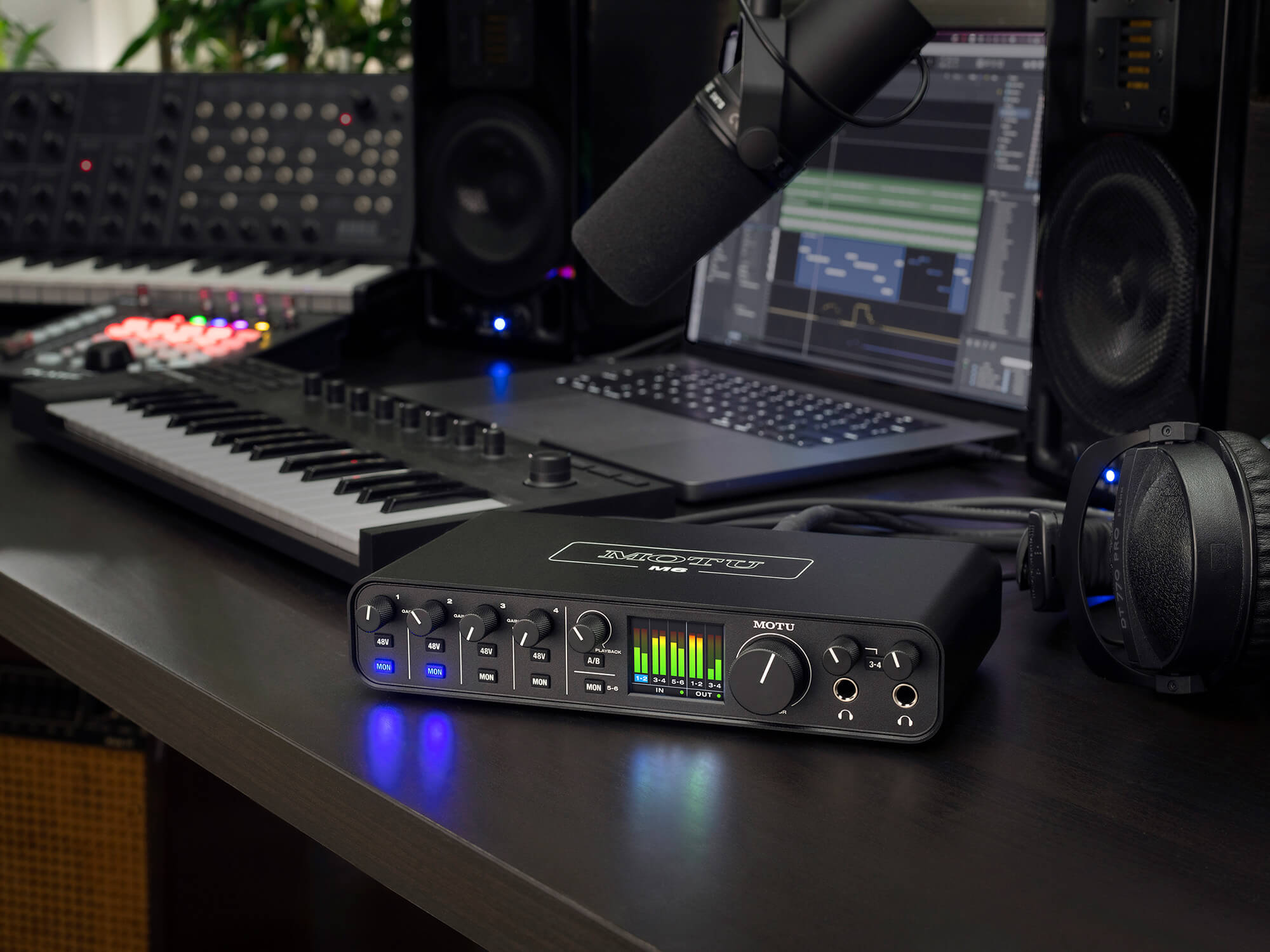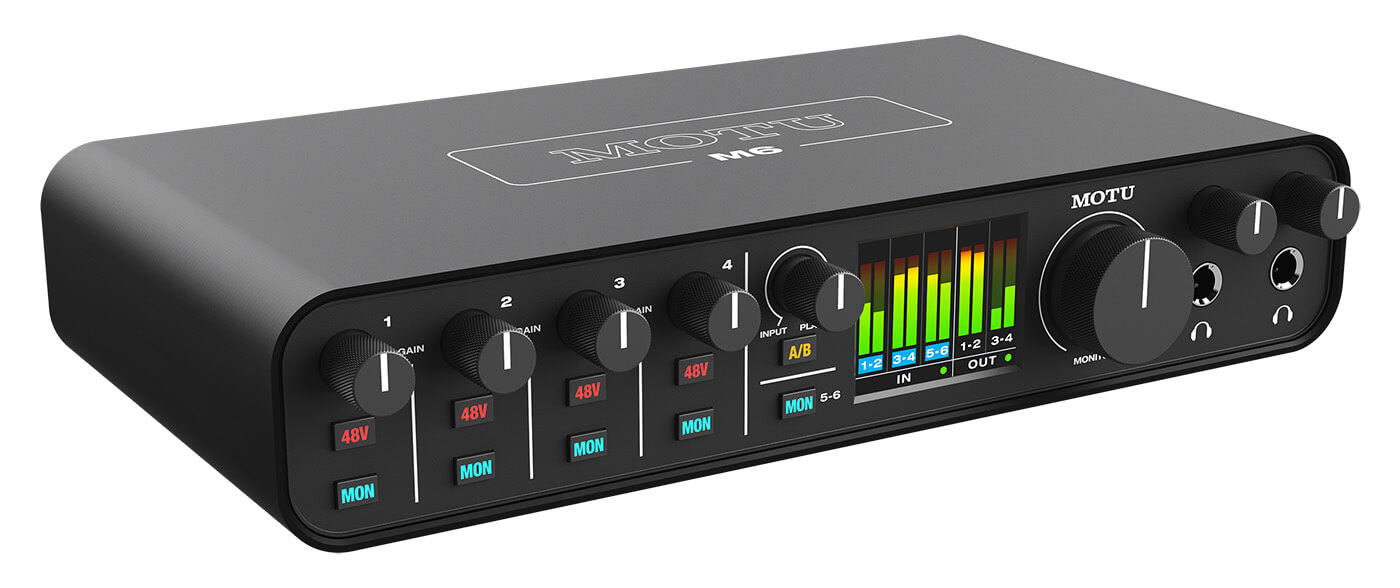MOTU M6 review: Proof that high-quality audio I/O needn’t be complicated
The new addition to MOTU’s M-series of audio interfaces brings increased I/O while retaining the musician-focused ease of use the brand is famous for.

Review Overview
Our rating
8
Our verdict
⊕ Ease of use means no distractions from creative flow
⊕ DC-coupled line outputs support outputting CV signals
⊕ Works as well on iOS as on desktop
⊕ Impressively low I/O latency
⊖ Only one headphone output can switch the signal it carries
⊖ No way to balance levels of direct monitor signals
The musician’s mind often works differently to the sound engineer’s. The latter loves nothing more than twiddling knobs, pressing buttons, and losing themselves in painstaking EQ decisions, whereas the former just wants to capture and develop their ideas as naturally and effortlessly as possible.
Massachusetts-based MOTU has a long-time reputation for leaning its gear offerings towards this musician mindset, and its new M6 audio interface does nothing to buck that trend.

In the box
Like the M2 and M4 before it, the M6 is a compact and portable interface packaged in a sleek desktop enclosure. At first glance, the unit looks like it’s half-rack size, but is unfortunately a smidgen too tall for rack mounting – slightly surprising given how much of MOTU’s product catalogue uses the half-rack format.
The M6 provides (you guessed it) six input channels, four of which accept mic, line or hi-z / instrument inputs via rear-mounted XLR/jack combi sockets. It’s slightly unusual to use the same connector for line and hi-z signals, with many interfaces using a different signal path for instrument connections. But the M6’s preamps have no problems adapting to whichever signal you feed them, with ample gain range and a clean, detailed sound.
Next to the four combis are the two remaining inputs with balanced jack connections. These only take line signals and so have no preamp stage, which is fine for synths, effects returns and the like. They offer a decent amount of signal headroom too, so can cope with fairly hot signals.

MOTU’s M6 provides four output channels that are fed to the four rear-facing line out sockets and to the pair of front-mounted headphone sockets (all use standard 6.35mm TRS jacks). Line outputs 3 and 4 can be used as normal outputs, carrying a cue mix or as a send to an external effects processor, or can be configured as an alternate monitor output. When in this mode, the front panel’s ‘A/B’ button comes into play, muting one output pair and unmuting the other.
As an extra bonus, M6’s line outputs are DC-coupled, and so can be used to send CV signals from software such as Ableton Live and NI Reaktor to modular and semi-modular analogue synths (or any other gear that can work with control voltages).
The headphone outputs are powered by amps that deliver a clean and accurate sound, and pack quite a punch when turned up high. Both can mirror the main output 1 and 2 signal, but only the second can be switched to carry the output 3 and 4 signal, which is limiting if you plan to work with more than one musician at a time.
In addition to the physical ins and outs, M6 has an internal loopback bus that allows you to use the signal being sent to outputs 1 and 2 as a recording source. An alternative second loopback option mixes any live inputs into the loopback signal too – very handy for live streams and podcasts.

Easy does it
MOTU has done a stellar job of making the M6 easy to use. Each mic/line/hi-z channel has a dedicated gain control and phantom power button, while the level meters on the high-resolution plasma display make it simple to dial in the ideal amount of gain and keep an eye on the output levels. Each channel also has a button for toggling direct input monitoring for that channel – when any are enabled, a dedicated rotary control allows you to then set the balance between direct-monitored input signals and the DAW playback signal.
All of this takes only moments to set up, but the drawback is that it offers no way of adjusting the relative monitoring levels of the direct-monitored signals, short of adjusting the input gain or monitoring via your DAW. Neither are ideal options, but at least the M6’s impressive round-trip latency – around 15ms at 48kHz in our testing – is fast enough to be workable if you need to monitor inputs through your DAW.
Of course, balancing inputs and outputs is where a companion software mixer app might step in. But such mixer apps can be a source of consternation and confusion, especially from the perspective of a recording artist who doesn’t want to concern themselves with technicalities. So the M6 does not have one. Instead, inputs and outputs feed directly to and from your DAW, and everything else is managed via the interface’s front panel controls. Despite the aforementioned pitfalls, this way of working is refreshingly immediate and fuss-free.
But no audio interface offering would be complete without an accompanying suite of useful production software, and M6 is no exception. The interface comes with MOTU Performer Lite, Ableton Live Lite, a collection of over 100 virtual instruments and a 6GB library of professional loops and samples.

Classy
MOTU’s M6 is class compliant and so works with iOS and macOS without the need for additional drivers. Although, there is an optional macOS driver that minimises the system’s input and output latencies (we were using this driver to get the 15ms latency mentioned above). Drivers for Windows are available, too.
Happily, using M6 with iOS gives a near-identical experience to using it with a desktop computer (the loopback buss is not available – iOS has its own built-in inter-app audio busses), and this is thanks entirely to its lack of a software mixer. Other audio I/O boxes rely on their software to deliver functionality, yet that software is rarely (if ever) available for iOS. But the M6 does not have a software mixer, so there’s no problem.
Overall, then, the MOTU M6 perfectly fills a niche in the (very crowded) audio I/O market. It provides a useful input and output count, and delivers high-quality sonic performance, yet is so very easy to set up and work with that you almost forget it’s there.

Key Features
- High-resolution level meter display
- Four mic/line/hi-z analogue inputs
- Two line-only analogue inputs
- Four DC-coupled analogue outputs
- Two headphone outputs
- MIDI I/O
- Bundled production software suite
- Buss-powered when connected via USB 3.0; external PSU included for USB 2.0 connection
- £419 street price
- Contact MOTU
- Buy: Gear4music, GAK